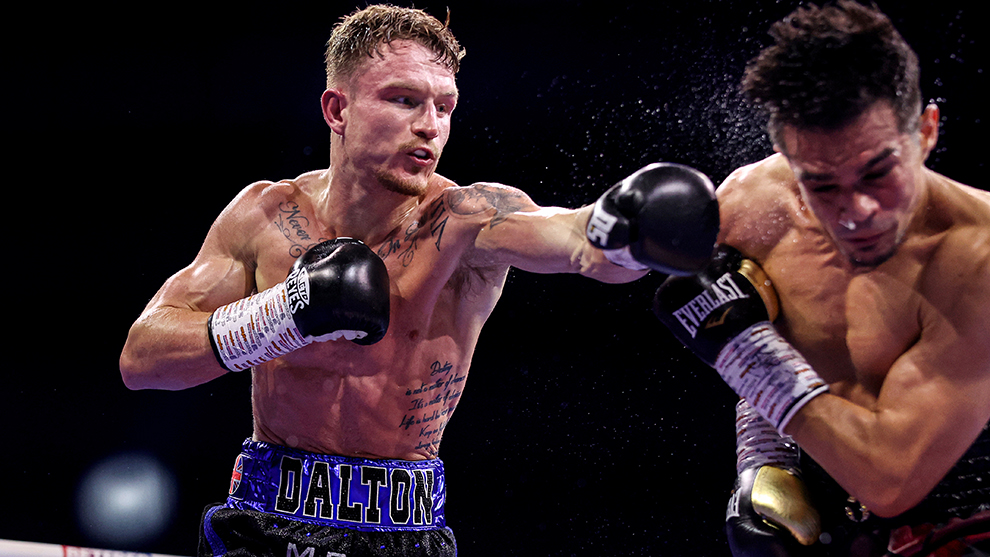By Matt Christie
THERE is an art to building boxing champions, the intricacies of which are not always obvious. Whether matchmakers are selecting the right opponents to develop the prospect at the right time or the promoter is banging the drum to generate attention, there will always come a point – in the careers of the most successful – when risks must be taken.
Such was the case last weekend when Dalton Smith knocked out contender-cum-gatekeeper Jose Zepeda. After four rounds of cagey chess play in which Zepeda proved his ability and canniness, Smith spied a hole in the veteran’s defence in the fifth. Check was soon followed by checkmate when a right hand bulleted into the Californian’s stomach.
The victory over Zepeda is more than just four and a half rounds of boxing excellence, it is the product of understanding the importance of not wasting a move nor opportunity on the way up. Smith progressed from fighting the conventional prospect fodder in his fifth fight, gone at that point were the opponents with losing records. Thus began his climb up the ranks, with each new rival either a little more accomplished than the last or the bringer of a box that Smith needed to tick. Opponent number five, Benson Nyilawila, was a southpaw. Opponent number six, Nathan Bennett, a British opponent who came to win. Opponent number seven, Ishmael Ellis, tall and ambitious. Opponent number eight, Lee Appleyard, a former English champion in the midst of a fine run of form, etcetera, etcetera.
Though Zepeda represented his biggest step-up yet, it was also all part of the plan. The fourth southpaw that Smith had encountered in his 16-fight professional career was 34 years old, at least three years removed from his peak and he’d only won one fight in the last 24 months. Cleverly engineered behind the scenes before expertly executed by Smith himself, bigger tests than this nonetheless await. And with this kind of career management, Smith will have the best possible chance to succeed when they arrive.
Many now hope the next test comes against Adam Azim, the wunderkind and European champion at 140lbs. Though this is a mouthwatering prospect, don’t be too harsh on Azim if it doesn’t come next, however. A relative pup at the age of 22, and without any real senior schooling at amateur level, the 11-0 Azim has the right to take the step up when he feels ready, in exactly the same way that Smith did. The good news is he’s not that far off.

Dalton Smith takes the fight to Jose Zepeda.
(Photo by George Wood/Getty Images)
HUGE IMPROVEMENT
The Small Hall scene has significantly upped its game
CREDIT where it is due. In our September 2022 issue we bemoaned the state of small hall boxing with the headline on the cover reading, The Unfair Fight: Why are so many occurring in British rings?
Though there was initial prickliness from certain insiders about our investigation, we must now point out that the subsequent improvement has been a joy to behold. Back then, it would have been rare for there to be a single competitive fight taking place across all the small halls in any given weekend. Now, however, it is rare for there not to be at least one on every card, with many in recent months showcasing two or three. That represents far better value for money.
Kudos, therefore, to the matchmakers and the promoters, many of whom plough their own money into their promotions aware they’re unlikely to see a return. One hopes the transition currently underway ultimately reverses those loss-making trends.
The various area titles, which provide a natural platform towards the British championship, are now regularly being contested with passion and pride. In turn, that Lonsdale Belt – though not quite at the level it used to be – is once again one of the most desirable trophies to win and nearly always guarantees keenly-fought contests.
Making an enticing product that appeals not only to those buying tickets to see one fighter, but to those who want to be entertained all evening, will surely benefit the sport at all levels.
Well done to all involved.






